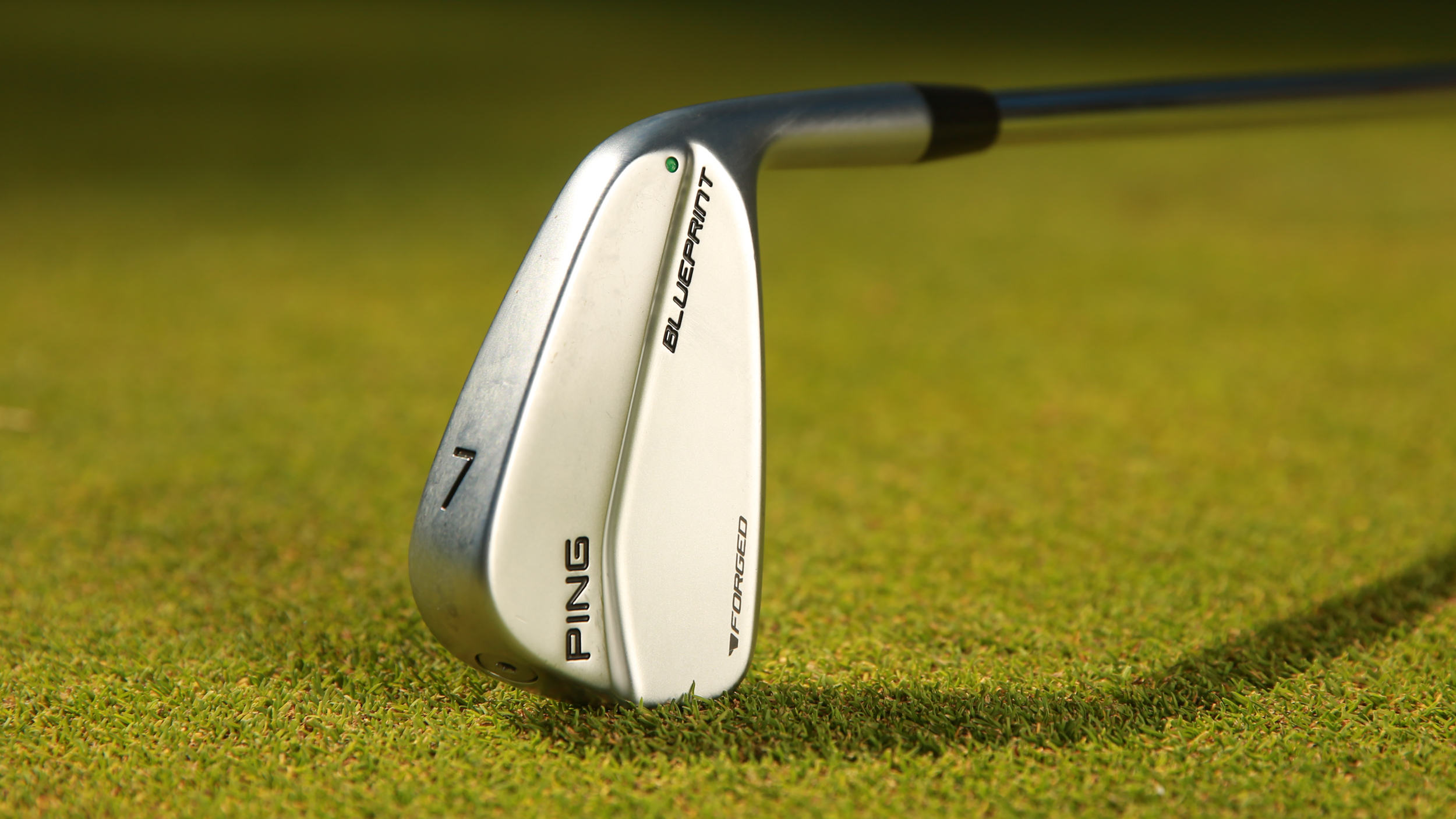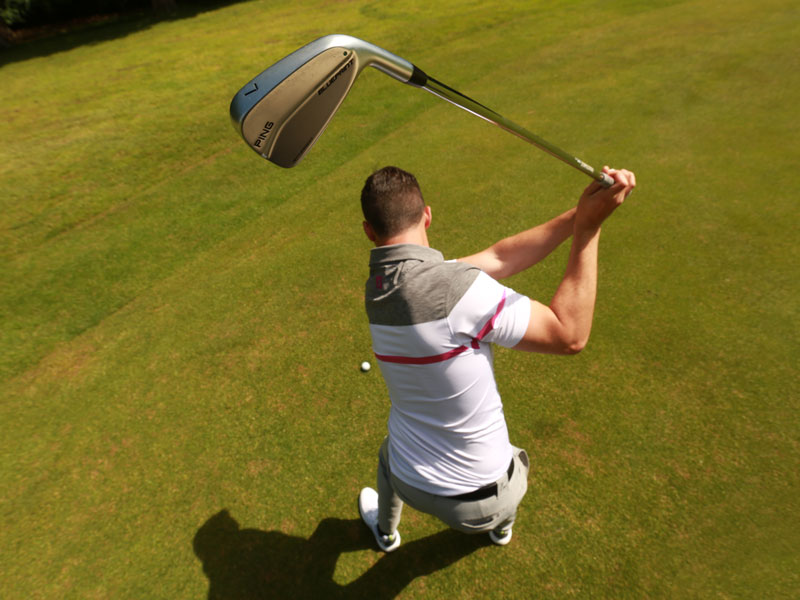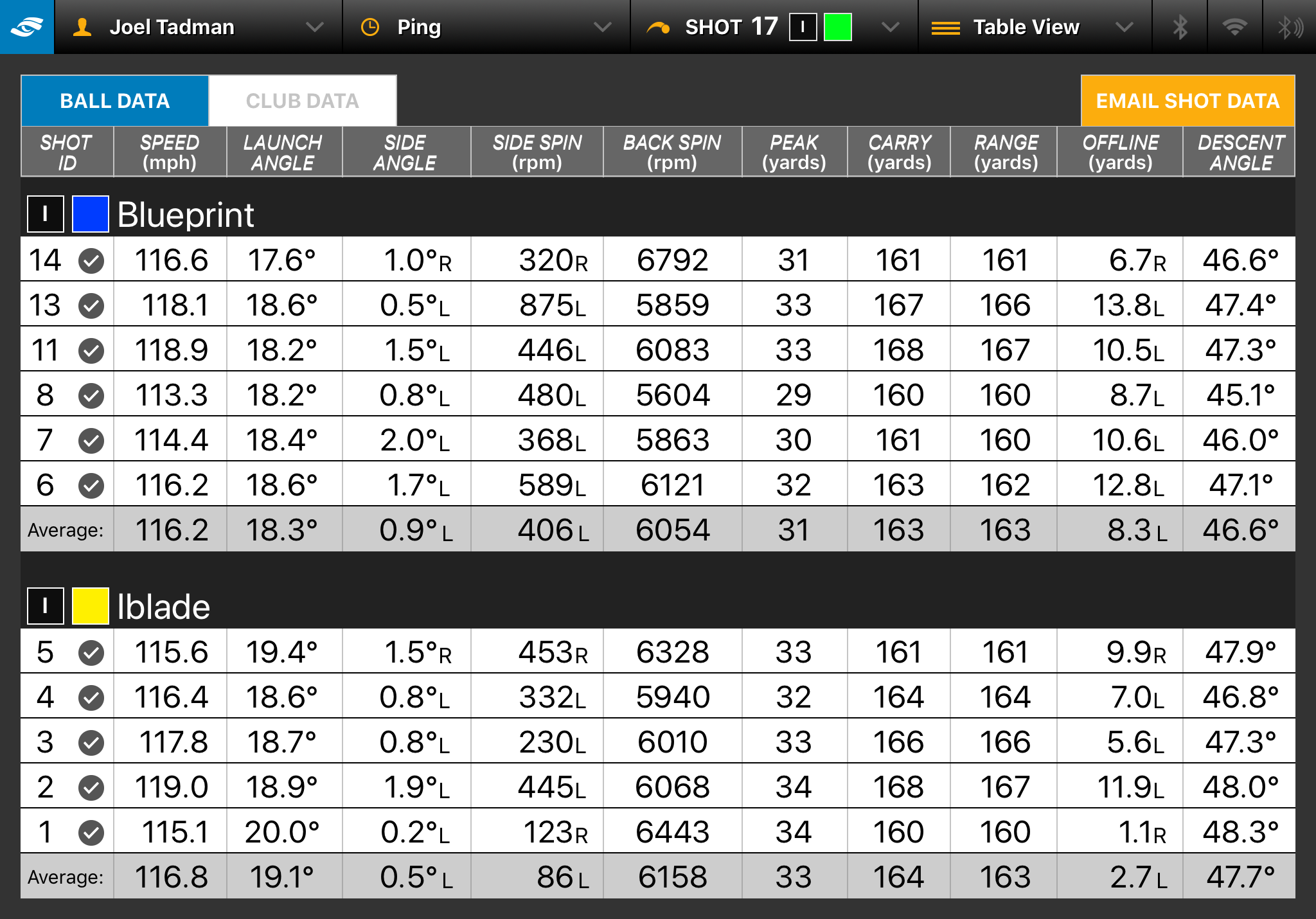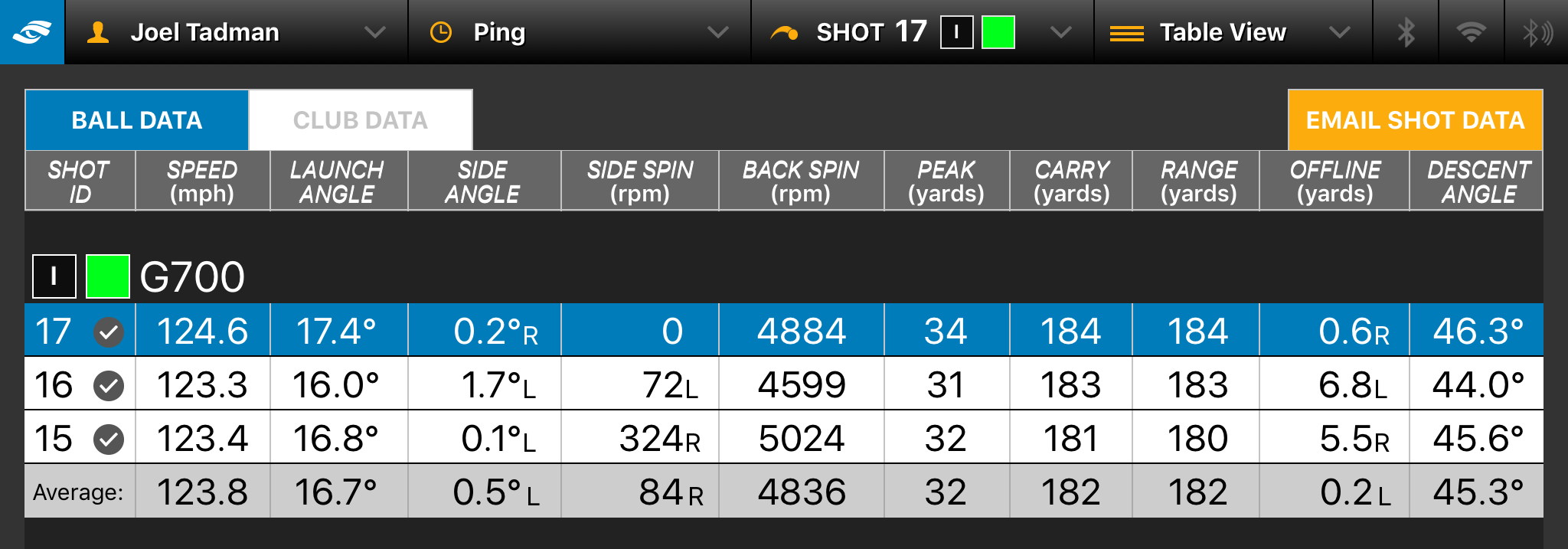Ping Blueprint Iron Review
Joel Tadman tests Ping's latest blade at Woburn Golf Club

Blueprint is one of the best-looking and feeling bladed irons on the market. Competent players will enjoy being able to manipulate the flight at will but in truth, the audience is small and they come with a hefty price tag.
-
+
Exceptional feel and workability
-
+
Stunning looks from every angle
-
+
Consistent from the sweetspot
-
-
Lack forgiveness
-
-
Pricey
Why you can trust Golf Monthly

Ping Blueprint Iron Review
It seems with every new model, Ping irons get easier on the eye and visually, the Blueprint might just be the best yet. A pure, out-and-out blade, on first glance it is clear who this iron is aimed at based on size alone.
Watch Joel Tadman fully test the Ping Blueprint iron in this video review
The very short blade length, thin topline and narrow sole dictate that this is an iron designed for the most precise ball strikers – there clearly isn’t much margin for error on the strike. In fact, the hitting area of the four iron is barely bigger than the width of a golf ball! Just like the best golf blade irons, this iron places a higher priority on feel and workability over forgiveness and distance.

We tested a 4-iron, 7-iron and pitching wedge in Dynamic Gold 120 S300 shafts at the stunning Woburn Golf Club, and indoors on the Foresight Sports GCQuad launch monitor.
Putting the intimidation factor to one side, the Blueprint irons are actually very enjoyable to hit once you find your rhythm. You feel like you can manipulate the flight in whatever way you choose more easily than you can with a game improvement iron. So for those who want or need to shape or flight the ball differently, the performance of these irons is perfectly matched.

The GCQuad launch monitor data showed us that ball speeds dropped off a little more with Blueprint on off-centre strikes than they did with iBlade, Ping’s most compact cavity back iron in the range. The distance, spin and launch were fairly similar, which is to be expected given the lofts are the same.
The feel was also similar too. You could argue the Blueprint feels a touch softer on centred hits, while the iBlade felt a touch hotter and more solid generally. Blueprint does offer some assistance on slight off-centre hits; it’s more the narrow hitting area that requires precision. For some, a narrowed focus on the strike will lead to decent results with Blueprint.

It was interesting to compare Blueprint to the G700 iron, the largest and most forgiving iron in Ping’s range at the time. Not only could you work the ball a lot less, the G700 flew much higher despite the 7-iron loft being around four degrees stronger. It also produced ball speeds around 8 mph faster and spun a lot less than Blueprint, contributing to 20 yards longer carries on average.

Given its size and performance, our testing backed up our initial view that Blueprint should only be considered by competent players, in reality those of a scratch handicap or below. That said, low handicappers with decent swing speeds who consider iron play their strength could also test them if interested.
Besides a lack of forgiveness, the price is a stumbling block. Coming in at over £1,500 for a seven-piece set, it’s a high price to pay for an iron that offers little else besides great feel and workability. I see no need to be switching out of my TaylorMade P770 irons, nor would I if I was still using my iBlades. But for some, the lure of a true blade that looks and feels as good as it does will be too tempting to dismiss.
Get the Golf Monthly Newsletter
Subscribe to the Golf Monthly newsletter to stay up to date with all the latest tour news, equipment news, reviews, head-to-heads and buyer’s guides from our team of experienced experts.

Joel has worked in the golf industry for over 15 years covering both instruction and more recently equipment. He now oversees all equipment and video content at Golf Monthly, managing a team of talented and passionate writers and presenters in delivering the most thorough and accurate reviews, buying advice, comparisons and deals to help the reader or viewer find exactly what they are looking for.
One of his career highlights came when covering the 2012 Masters he got to play the sacred Augusta National course on the Monday after the tournament concluded, shooting a respectable 86 with just one par and four birdies. To date, his best ever round of golf is a 5-under 67 back in 2011. He currently plays his golf at Burghley Park Golf Club in Stamford, Lincs, with a handicap index of 3.1.
Joel's current What's In The Bag?
Driver: Titleist GT3, 9°, Fujikura Ventus Black 6 S shaft.
Fairway wood: Titleist TSR3, 15°
Hybrid: Titleist TSi2, 18°
Irons: Titleist T150, 4-PW
Wedges: Titleist Vokey SM10, 50°, 54° and 58°
Putter: LAB Golf DF3
Ball: 2025 Titleist Pro V1x
-
 Watch The Masters Round Three: Live Streams, TV Coverage, Start Time For Today's Play
Watch The Masters Round Three: Live Streams, TV Coverage, Start Time For Today's PlayHow to watch The Masters on Saturday April 13, with all the information on live streams, TV broadcasts, and free coverage for Round Three at Augusta National.
By Patrick Fletcher Published
-
 14 Big Names Who Missed The Cut At The Masters
14 Big Names Who Missed The Cut At The MastersAn exciting prospect is in-store over the weekend at The Masters, where a number of players missed the cut at Augusta National
By Matt Cradock Published
-
 Why Rory McIlroy Is The Man To Beat At The Masters
Why Rory McIlroy Is The Man To Beat At The MastersWe look at three reasons why Rory McIlroy is in the driver's seat for the Green Jacket this weekend
By Elliott Heath Published